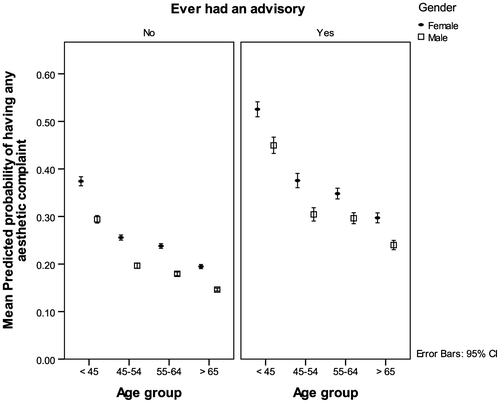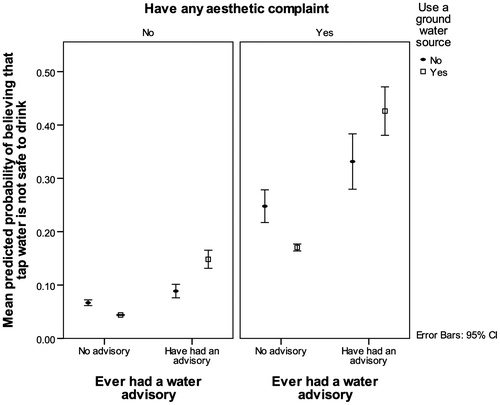Figures & data
Table 1. Total numbers of complete and missing responses and the proportion of respondents at each level for each of the outcomes modeled and risk factors evaluated.
Table 2. Comparison of key demographic variables between the sample population and the Statistics Canada Citation2011 Census of Population for the rural census subdivisions included within the survey regions.
Table 3. Proportion of respondents identifying each type of aesthetic complaint overall and by the type of water source used.
Table 4. Risk factors significantly associated with having any type of aesthetic complaint with the household’s tap water in the final multivariable model.
Figure 2. Predicted probabilities of having any aesthetic complaint, comparing those who had a drinking water advisory to those who did not, for men and women in each age category averaged over the use of water delivered by truck and length of time residing in community. CI: confidence interval.

Table 5. Risk factors significantly associated, in the final multivariable model, with the perception that household tap water is not safe to drink.
Figure 3. Predicted probabilities of believing the tap water is not safe to drink for the interaction between reporting a drinking water advisory and use of a ground water source, separated by whether or not an aesthetic complaint about the water was identified, and averaged over the use of a community water supply. CI: confidence interval.


